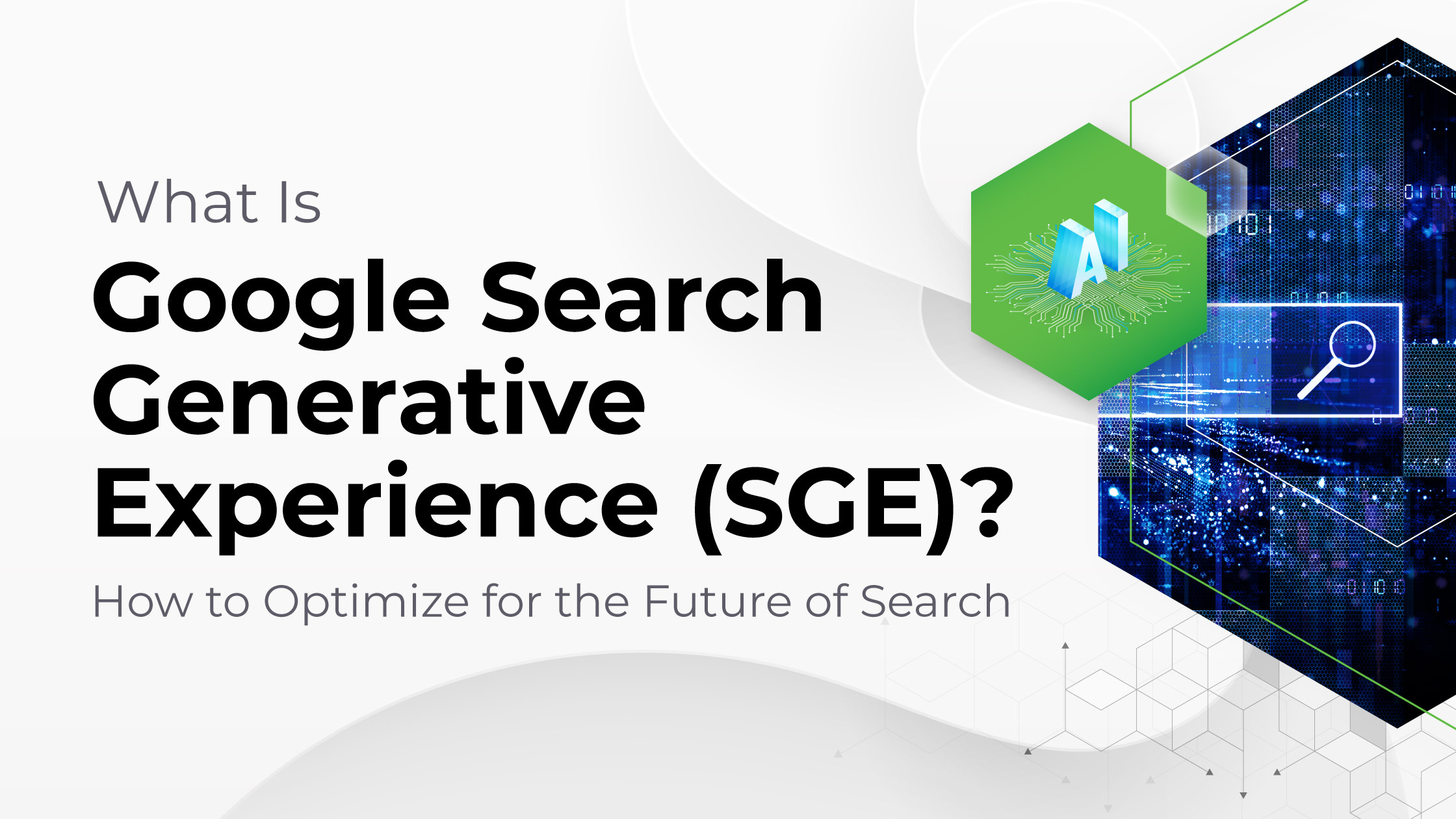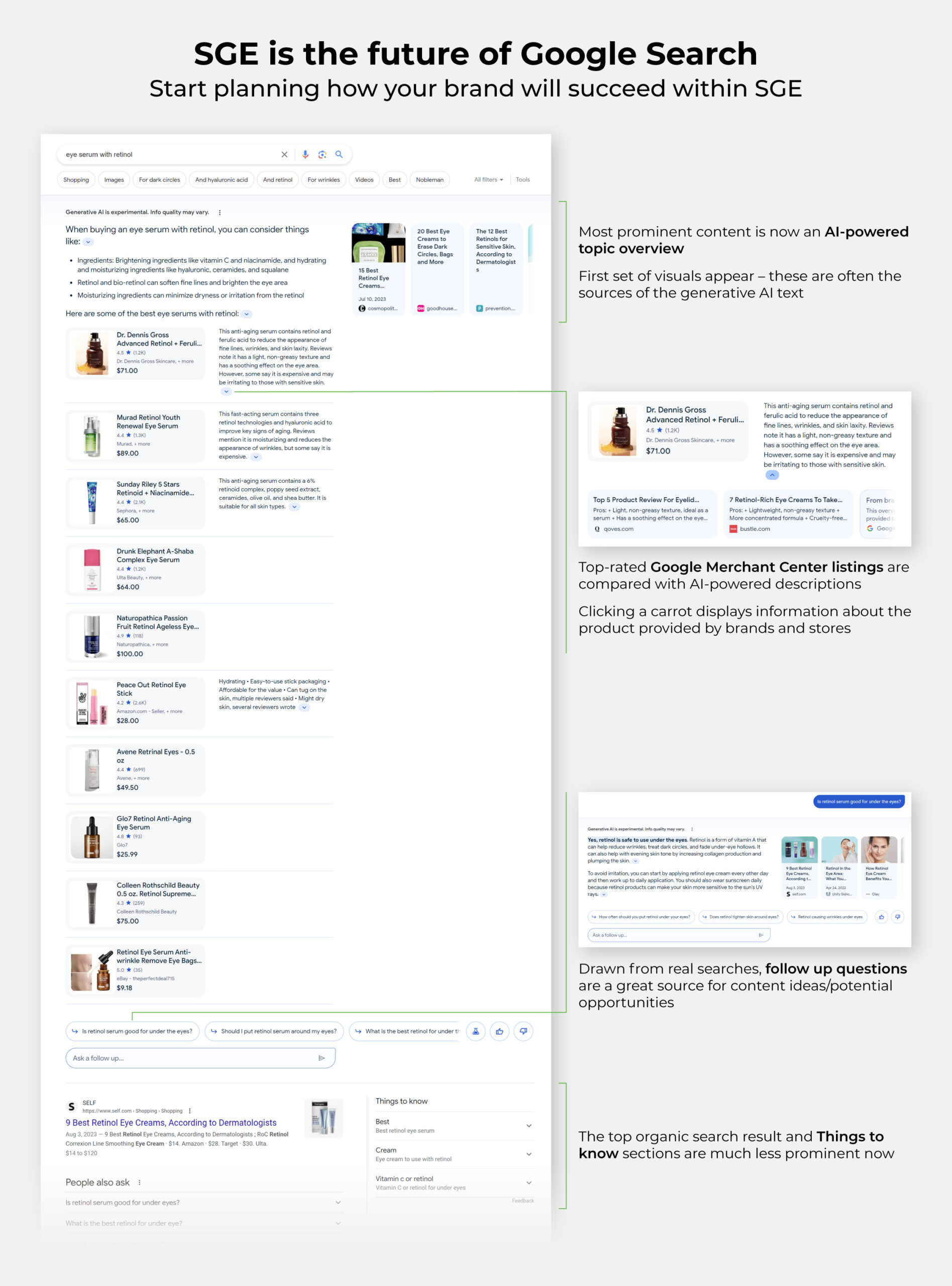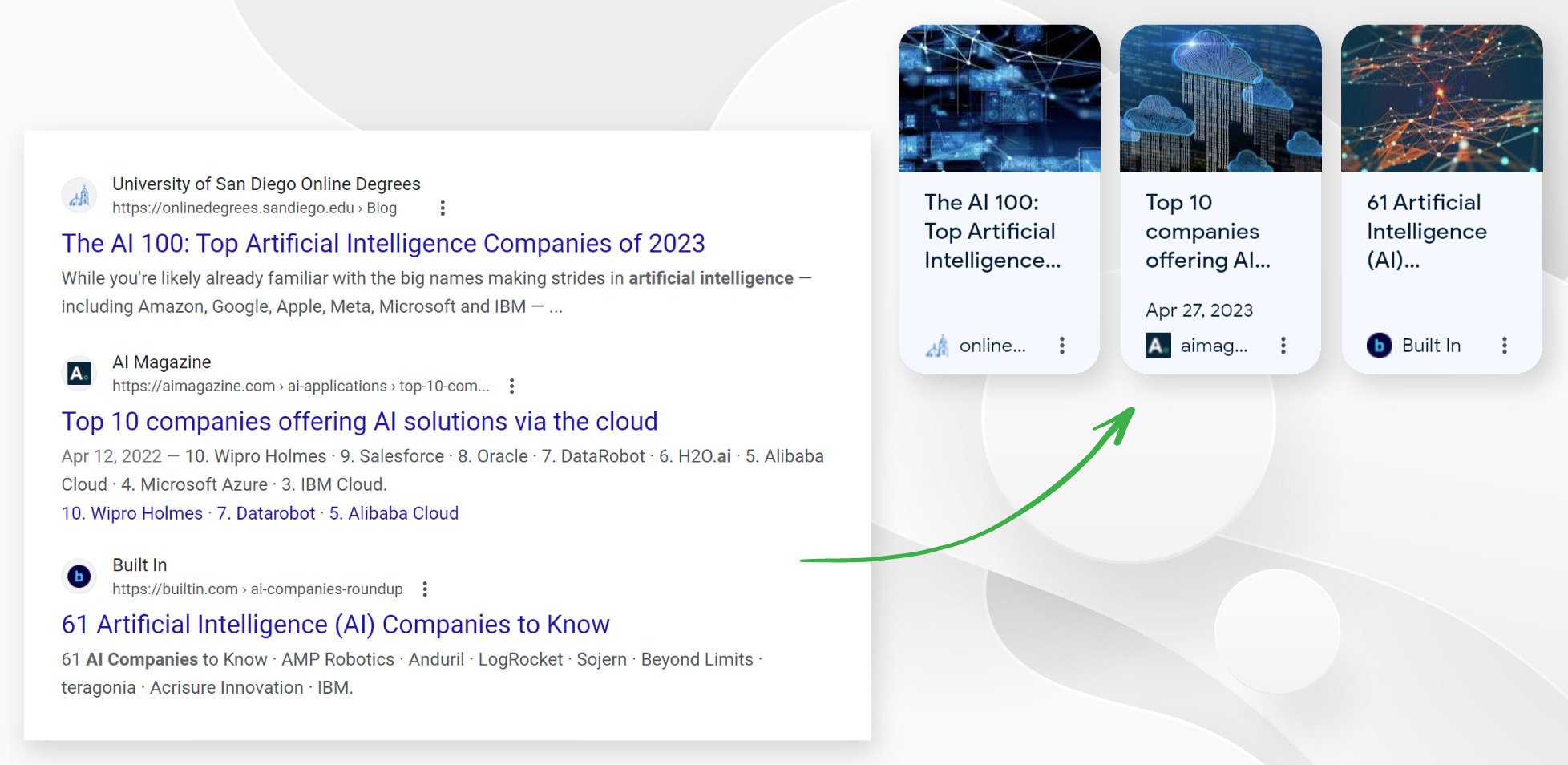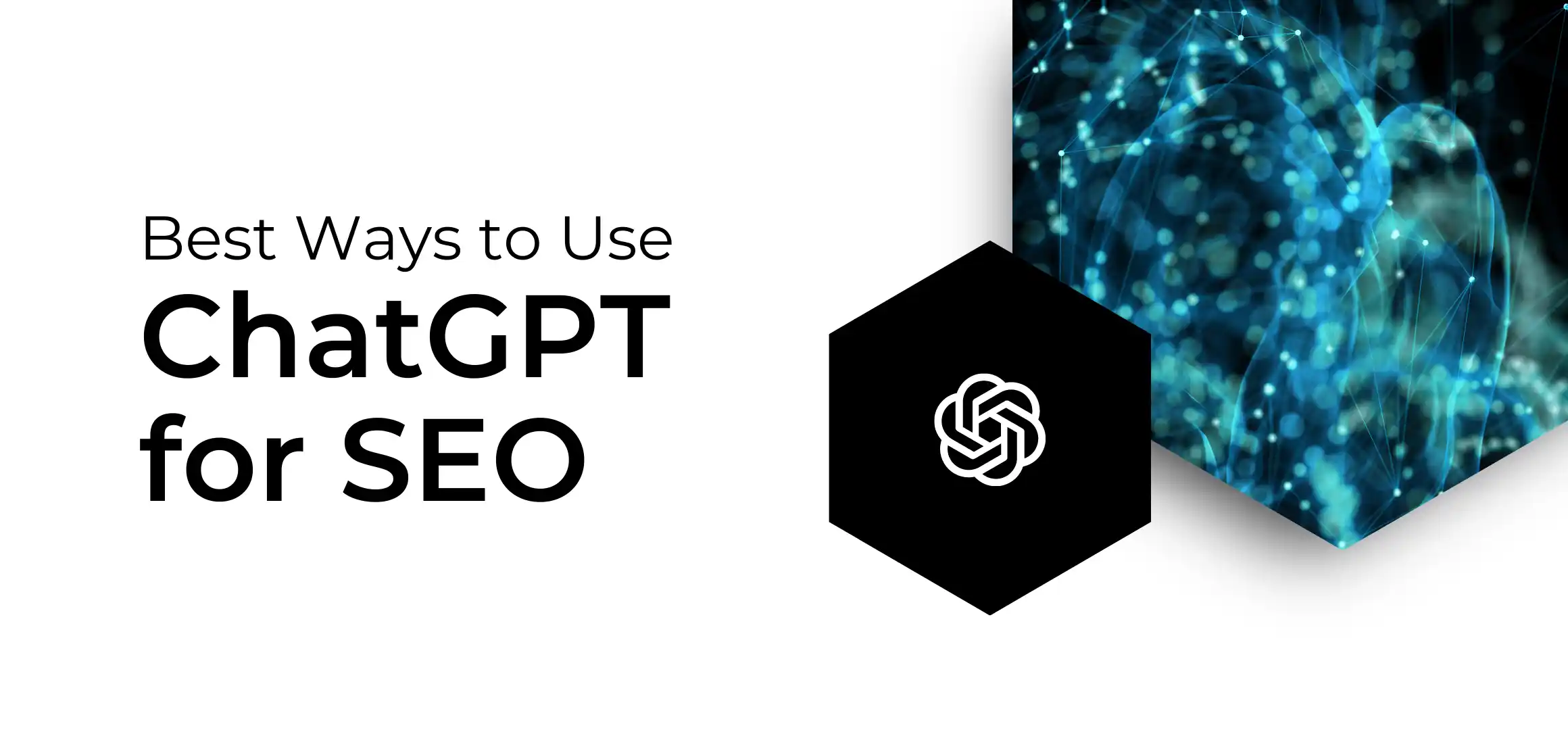
While Hollywood grapples with the role of AI in the entertainment industry, the marketing landscape continues to enthusiastically greet an expanding roster of AI tools.
One such tool is the Google Search Generative Experience (SGE).
While this Google generative AI search product is still in limited distribution, there’s industry-wide expectation that it will become a mainstay of the Google search product.
Keep reading for clarity on how your brand can prepare for the full rollout of SGE, including:
- How does SGE work?
- What’s the main difference between Google SGE and traditional ranking algorithms?
- How can businesses use SGE?
- What does SGE mean for the future of content?
How does SGE work?
Big caveat: SGE is still in development. The experimentation is so heavy that during the course of creating this blog post, we couldn’t generate the same results twice.
However, while nothing is “final” yet, industry insiders strongly believe that certain key elements will remain – those are what we’re discussing below. Proactive brands should be planning and strategizing based on these elements.
Google SGE (Search Generative Experience) is an experimental search feature that uses generative AI to speed up the delivery of exactly what users are most likely searching for, and improve the quality and relevance of what’s delivered on the SERP (search engine results page).
By generating a more comprehensive and informative AI-powered overview of the search results, SGE provides an enhanced search experience that can include a range of items, such as:
- Content summary
- Related queries or questions
- Local results
- Images
- Product listings
- Product descriptions
- Informational links for additional exploration, and more.
SGE is not a static experience for all users and all searches.
To be clear, the list of elements above will not be populated for all searches.
SGE determines the best/most appropriate combination of elements to provide on a case-by-case basis. Searches for products will not be identical to searches for educational/informational content or location-specific searches. Context is everything.
Maybe the only guarantee is that product-related searches will likely always include product links and descriptions.

Differences between Google SGE and traditional ranking algorithms
Google SGE provides generative AI search results, while traditional Google rankings do not. But what does that even mean?
Although Google has never offered full transparency into their search algorithms, we do know that the pre-SGE version of their search product considers several well-known criteria when deciding which results to display in the top positions. These factors can include:
- User search intent
- Relevance and timeliness of the content
- Originality, trustworthiness, expertise, and overall quality of the content
- Backlinks (volume and quality)
- Page authority
- Click-through rate from the search results
- Bounce rate
- Overall page experience (mobile-friendliness, load time, interactivity, etc.)
- UX and UI design, and more.
Google AI search results delivered via SGE also rely on these same ranking factors (the top-ranked pages are almost always included in the SGE results), but goes further by providing an AI-powered snapshot overview of key details related to their search, in addition to:
- Suggested next (or related) steps to continue their exploration
- Option to ask follow-up questions in a conversational mode that retains topic context
- Product-related searches will include product sitelinks that correlate multiple factors within the user’s indicated search intent
The expectation is that SGE will deliver an exponentially more relevant and informative search experience than traditional search algorithms ever have.
SEO for TOF: How to Optimize Your Top of Funnel Content
Discover key strategies to optimize your TOF content for search engines and drive more traffic to your website. Increase visibility and generate more leads. Read now!
Good news! SGE clicks will generally be far more qualified clicks.
With SGE, users no longer have to click into a series of search results and comb through the content inside each one in order to locate precisely what they’re searching for.
The goal of SGE is to provide generative responses that go to the heart of search intent, ensuring that more clicks will be highly qualified clicks than they were in the traditional search context.
If the search is product-related, SGE will also provide Google Merchant Center product links that align with the search query. Instead of having to shuffle through half a dozen search results to find the product that meets their needs, users can use SGE to quickly zero in on what they want.
Users get a faster, more accurate, and convenient search experience. That’s a big win for searchers, but what does this mean for brands like yours?
How can businesses use SGE? 3 ways to prepare.
When SGE is fully deployed and becomes the primary search engine experience for all Google users, there will likely be additional opportunities for brands to leverage. We’ll dig into those then.
In the near term, there are 3 significant actions your product marketing and content teams can take to make sure that when SGE is universally “switched on,” your brand is well positioned to retain existing market share and gain even more.
SGE Preparation Step 1: Optimize above the fold assets
‘Above the fold’ refers to content that appears in the upper part of the user’s screen when they first land on a page – everything that’s visible before they need to scroll.
Google SGE prioritizes three main types of above the fold content:
- Page titles – Character count on SGE page titles is considerably less than the traditional Google search product. Your content writers should revise titles to maintain basic SEO requirements, while being short and catchy enough to leverage the SGE context.

- Featured images – The sheer volume of images within some SGE results is one of the most obvious changes in the user experience. Every page on your website (but at the very least, the pages with the greatest relevance to your customer journey) should all have a featured image.
Pages without a featured image are missing the opportunity to engage and draw in customers, and risk being perceived as less sophisticated than other options, like so:

BUT! Notice that without a featured image, the entire page title is visible, which may be more valuable to your brand. In certain conditions, that could be a deliberate strategic choice.
This is another reminder that there are NO hard and fast rules in performance marketing – everything needs to be tested and verified.
If your marketing analytics and testing methodologies aren’t up to date, make that priority #1.
And not just any featured image will do.
In this eCommerce beauty brand example, notice how small the third featured image is.
For all net new content creation, creative teams need to understand the SGE context and thoughtfully select imagery that positively showcases your product and/or the context your users need to see and understand.
For existing URLS, perform relevant searches to see the images as they’ll appear within SGE, so you can identify what will work as is and what needs to be optimized.

Similarly, in the B2B SaaS brand example below, notice how the dimensions of the featured images on the second and third search results don’t align with the SGE constraints and therefore miss the goal of relaying additional information in the graphic itself.
The sixth featured image is also far too small to be effective.

- Favicon – A favicon is the small icon that appears in desktop browser tabs. But as you can see, the SGE format is incorporating each brand’s favicon quite prominently in search results.
Many brands will need to revise their favicon to be recognizable at a glance. In the eCommerce beauty brand example below, the white background and tiny font of “ELLE” in the second search result lacks visual impact, especially when compared to the crisp and clear “Cosmopolitan” favicon.

But are these optimizations too small to significantly improve brand visibility in Google SGE?
Organic performance marketing is never about just one optimization. It’s an orchestra of elements that make it easier and easier for search engines (and subsequently, your ideal customer/client) to:
- see the merit of entering your brand’s ecosystem
- develop trust in your product/service
- receive the exact information they need to make a buying decision.
Category leaders invest in every small and large detail of the customer journey. Bottom-line growth requires obsessing about the details.
SGE Preparation Step 2: Move toward a bite-size content philosophy (yes, even with long-form content)
Our content marketing consultants have been recommending this for years, but SGE will force everyone (at least, brands that want to rank well in organic search) to get on board.
Embrace a bite-size approach to ALL content creation – including and especially long-form content.
This does NOT mean brands should no longer create long-form content. Not at all. It means that all long-form content should be constructed as a set of related content blocks that provide clear context for exactly what is being conveyed in that section.
This bite-size content block approach seeks to:
- Improve the overall reading experience and retain content skimmers, which is a large portion of most brand’s traffic. (Reminder: A high quality reading experience matters because you don’t just want traffic – you want qualified traffic that will stay and engage with your content.)
- Make it easier for Google to successfully crawl and interpret your content, so it can accurately determine which searches are best aligned with your brand.
SGE will require most B2B tech and finance brands, whose subject matter experts are accustomed to creating detailed essay-style blog posts and landing pages, to schedule content optimizations of key pages, which leads us to recommendation #3…
SGE Preparation Step 3: Increase the volume and versatility of header tags
To create bite-size content that increases readability while also making the Google AI happy, content creators will need to use wayyyy more header tags than ever before.
Think of long-form content like an FAQ page – chunks of information, clearly denoted by a precise header that previews what the user will learn in that content block.
*Bonus for eCommerce brands* SGE Preparation Step 4: Optimize (or create) Google Merchant Center listings
Product-related search results often include multiple Google Merchant Center listings, but the upside is actually far greater than SGE organic search results.
Free and very easy to create, Google Merchant Center listings give eCommerce brands prominent visibility in Google Search, Google Maps, YouTube, Google Shopping, and Google Images.
What does SGE mean for the future of content?
As math-minded marketers, we generally only make predictions and forecasts based on actual data.
Having said that, our many years of business success coupled with the smoke signals Google is sending up, are revealing a few things about the future of content aimed at digital marketing performance:
- High-performing Content and Creative teams must balance creativity with a keen understanding of the AI expectations of Google SGE and Bing. (Sidebar: Microsoft is throwing the kitchen sink at their goal of stealing market share from the big G, and should be watched closely.)
- SGE is not a clarion call to abandon long-form content, but it does indicate that cost-effective resourcing must now include investing in content experts who offer a combo of long-form and short-form expertise.
How To Map Your Customer’s Journey
Explore our comprehensive guide on creating customer journey maps. We’re sharing practical steps to understand and enhance the customer experience.
- It’s not yet clear how the revamped SGE experience will be presented in Google Search Console. And since all content marketing strategies should only ever emerge from a deep dive into your marketing analytics dashboard, this is a huge grain of salt in any conversation about the future of content in Google SGE.
- The marriage of Google Search and AI will not change the primary function of SEO. The #1 goal of SEO is to help search engines understand and trust that your website is one of the best (if not THE best) resource to offer when ideal customers and clients are searching for your brand or category terms. While SGE is changing a lot, it will not change that essential truth.
TL;DR on Google SGE
- Google SGE is still an experimental feature, and not yet available globally. However, the widespread expectation is that it will soon become the new face of the Google Search product for all users.
- The biggest differences between the traditional Google Search experience and Google SGE are:
- Product-related searches will open with an AI-generated product overview instead of merely copying and pasting the exact SEO content each brand has already created
- Reduced visibility on page titles
- Greater emphasis on featured images
- Organic search results (the typical blue links) will be pushed much farther down the page.
- Currently, SGE is only shown automatically for some searches. However, there is an option to generate it on demand. As your team is working through the recommendations we shared above, they need to be mindful of this current inconsistency in the search experience.
- While there is general industry consensus that Google SGE is a promising new technology, it’s still under development and no one has clear data showing how it performs in the “real” world.






